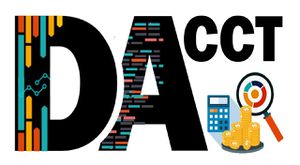Difference between revisions of "ANLY482 AY2017-18T2 Group18/Project Findings"
Zqlow.2014 (talk | contribs) |
Zqlow.2014 (talk | contribs) |
||
| Line 41: | Line 41: | ||
The final regression equation for model (i), (ii), (iii) and (iv) are as follows: | The final regression equation for model (i), (ii), (iii) and (iv) are as follows: | ||
| − | [[Image:project_evluation.png|800px| | + | [[Image:project_evluation.png|800px|center]] |
| + | |||
| + | |||
| + | Reviewing on the overall results of the regression model performed, we can see that: | ||
| + | |||
| + | *R-squared value for regression model (i) is 0.9676. This shows that with the following independent variables mentioned above, 96.76% of the variation in total project cost could be explained by our model. | ||
| + | |||
| + | *R-squared value for regression model (ii) is 0.6381. This shows that with the following independent variables mentioned above, 63.81% of the variation in manpower headcount could be explained by our model. Further investigation by LS 2 should be done to find out other variables that might contribute to the variation in manpower headcount as a cost driver, to better estimate manpower costs. | ||
| + | |||
| + | *R-squared value for regression model (iii) is 0.9588. This shows that with the following independent variables mentioned above, 95.88% of the variation in chemical & materials costs could be explained by our model. | ||
| + | |||
| + | *R-squared value for regression model (iv) is 0.9147. This shows that with the following independent variables mentioned above, 91.47% of the variation in equipment costs could be explained by our model. | ||
| + | |||
| + | While the models have shown significant predictor factors for total project cost, manpower headcount, chemical & materials costs and equipment costs, we believe that the current iteration of models performed can be strengthened further in terms of its explanatory and predictive ability. From our confirmatory analysis, we have tried to derive other relevant variables to be included in the models. With the low number of observations gathered due to the limited number of conservancy projects LS 2 undertakes, the analysis may benefit by incorporating greater years’ worth of data from the current dataset gathered. | ||
| + | Another limitation when performing regression analysis is that the regression equation is only valid from the range of the independent variables identified. Trying to estimate the dependent variable outside of the range of the independent variables will be an extrapolation, and possibly wrong. | ||
Revision as of 23:00, 12 April 2018
| Home | About Us | Project Overview | Project Findings | Project Management | Documentation | ANLY482 Homepage |
The final regression equation for model (i), (ii), (iii) and (iv) are as follows:
Reviewing on the overall results of the regression model performed, we can see that:
- R-squared value for regression model (i) is 0.9676. This shows that with the following independent variables mentioned above, 96.76% of the variation in total project cost could be explained by our model.
- R-squared value for regression model (ii) is 0.6381. This shows that with the following independent variables mentioned above, 63.81% of the variation in manpower headcount could be explained by our model. Further investigation by LS 2 should be done to find out other variables that might contribute to the variation in manpower headcount as a cost driver, to better estimate manpower costs.
- R-squared value for regression model (iii) is 0.9588. This shows that with the following independent variables mentioned above, 95.88% of the variation in chemical & materials costs could be explained by our model.
- R-squared value for regression model (iv) is 0.9147. This shows that with the following independent variables mentioned above, 91.47% of the variation in equipment costs could be explained by our model.
While the models have shown significant predictor factors for total project cost, manpower headcount, chemical & materials costs and equipment costs, we believe that the current iteration of models performed can be strengthened further in terms of its explanatory and predictive ability. From our confirmatory analysis, we have tried to derive other relevant variables to be included in the models. With the low number of observations gathered due to the limited number of conservancy projects LS 2 undertakes, the analysis may benefit by incorporating greater years’ worth of data from the current dataset gathered. Another limitation when performing regression analysis is that the regression equation is only valid from the range of the independent variables identified. Trying to estimate the dependent variable outside of the range of the independent variables will be an extrapolation, and possibly wrong.

